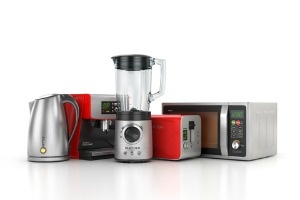 For decades, the tastes and preferences of the largest generational cohort — the baby boomers — have been an important factor shaping key trends in the US small appliances market. This group, noted also for its affluence, is now joined by another even larger generational group: the millennials.
For decades, the tastes and preferences of the largest generational cohort — the baby boomers — have been an important factor shaping key trends in the US small appliances market. This group, noted also for its affluence, is now joined by another even larger generational group: the millennials.
High-End Products to Continue to Rise
One notable trend in both the US small kitchen and floor care appliance markets over the last decade has been the ongoing rise in popularity of high-end products. Brands such as Keurig coffee makers, KitchenAid mixers, and Dyson vacuums (among others) have performed particularly well in recent years. One important market for such appliances have been baby boomers, a large demographic group with the financial resources to buy these relatively pricy devices.
Looking forward, millennials are expected to emerge as an increasingly important market. While millennials lack the financial clout of the older, more financially established baby boomers, they too favor the purchase of higher-end appliances. In general, millennials prefer to own a smaller number of higher-quality goods, which many can increasingly afford as their economic situations continue to improve. This suggests that high-end devices will continue to gain market share in the coming years.
Changing Life Stages to Boost Sales
An additional factor can be expected to boost demand for small appliances from both baby boomers and millennials in the coming years: the transition of each into new life stages.
As members of the baby boomer generation continue to age, many are expected to downsize their homes. This will support higher sales of appliances as they replace older products with newer models better suited for their smaller living environments. Particularly likely to benefit from this trend are appliances offering increased ease of use.
Meanwhile, millennials are transitioning into full adulthood, with many buying homes and starting families. This will drive many to replace appliances acquired as young adults with newer devices offering increased convenience in their busy lives. As an example, sales of slow cookers surged in 2015 as rising numbers of millennials discovered how these appliances could save them time and energy when making a wide variety of recipes.
Where to Learn More
Still have questions? We have you covered. For numbers and analysis covering US small kitchen appliance demand by product category for 2005-2015 with projections to 2020, see Small Kitchen Appliances: United States, a report published by the Freedonia Focus Reports division of The Freedonia Group.
Likewise, for numbers and analysis covering household floor care appliance demand by product category for 2005-2015 with projections to 2020, see Household Floor Care Appliances: United States. Both reports also offer discussions of pertinent trends in trade and US small electrical appliance retail sales. While you’re there, you can also check out our other small appliance report, Personal Care Appliances: United States.
About the Author: Steven Richmond is a Market Analyst with Freedonia Focus Reports, a division of The Freedonia Group. He conducts research and writes a variety of Focus Reports, which offer concise overviews of market size, product segmentation, business trends, and more.


